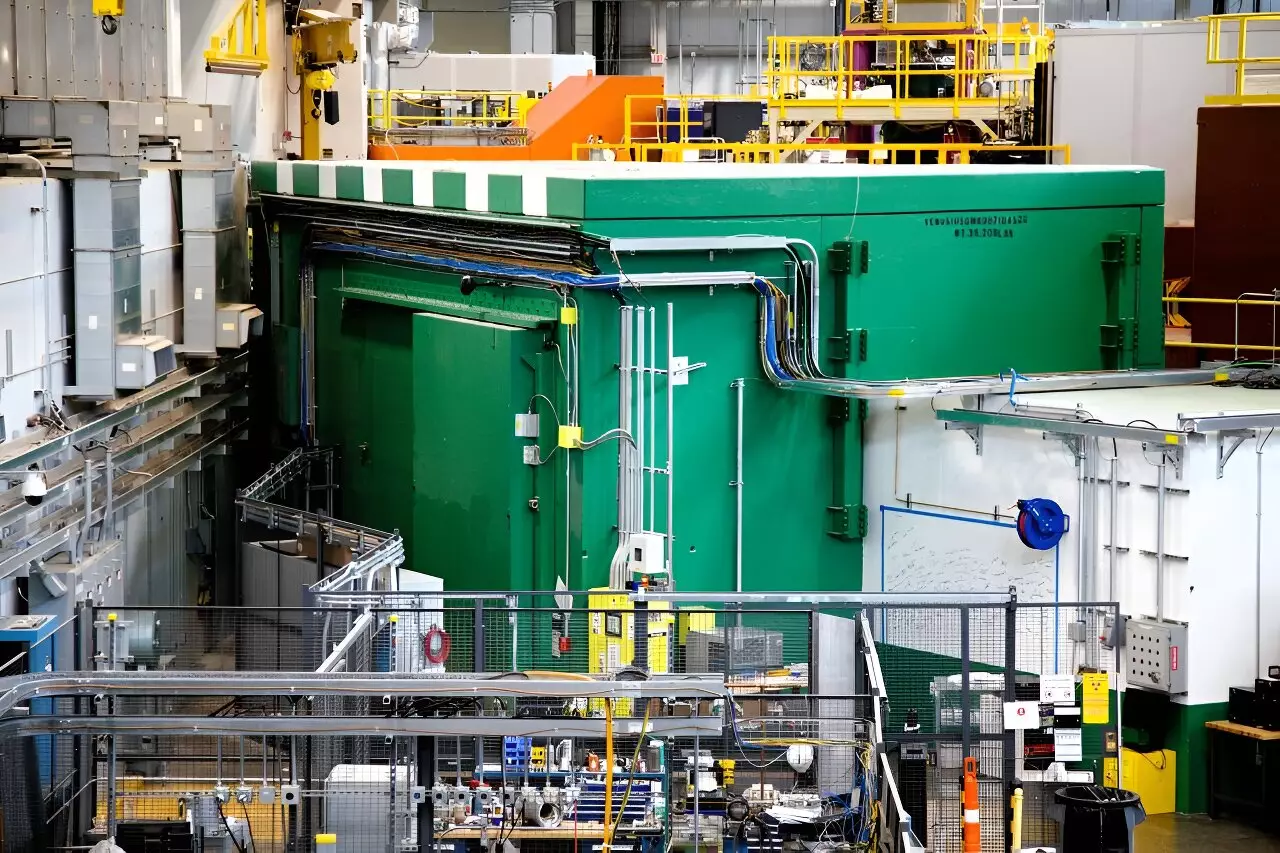The Oak Ridge National Laboratory (ORNL), under the aegis of the Department of Energy, has taken significant strides in the field of neutron scattering with the introduction of the Versatile Neutron Imaging Instrument, or VENUS. Officially sanctioned by the DOE’s Office of Science earlier this year, VENUS marks a groundbreaking advancement in neutron imaging capabilities that leverages artificial intelligence. This innovative instrument is not just an addition to ORNL’s Spallation Neutron Source but is poised to redefine research methodologies in a variety of scientific disciplines.
Venerated neutron scattering scientist, Hassina Bilheux, articulates the enthusiasm surrounding VENUS, describing its development as “a dream come true” for the entire ORNL team. This enthusiasm is not unfounded; VENUS encapsulates a collaborative effort that showcases the remarkable capabilities of its designers and engineers, heralding a promising future for neutron imaging research.
The implications of VENUS span numerous fields including energy storage technologies, materials science, and biological studies. Traditional imaging systems often interfere with the materials being studied, leading to potentially misleading results. However, the non-invasive nature of neutron imaging allows researchers to examine delicate samples without compromising their integrity. VENUS is designed to produce high-resolution three-dimensional images that provide precise atomic-level structural details, thus enabling scientists to derive insights that were previously unobtainable.
For instance, efforts directed toward developing resilient energy storage devices can benefit immensely from VENUS’s advanced imaging techniques. Researchers can study the microstructures of battery materials, crucial for optimizing their efficiency and lifespan. Similarly, the capabilities of VENUS in plant physiology research could facilitate the study of drought-resistant crops, aiding in the quest to address food security concerns in stressed environments.
A standout feature of VENUS is its incorporation of advanced artificial intelligence, which significantly enhances the operational efficiency of the instrument. Traditionally, researchers faced the daunting task of waiting several days, sometimes even weeks, to obtain 3D models from their experimental data. VENUS changes this narrative by employing AI algorithms that expedite the analysis process, allowing for the immediate acquisition of 3D data upon completion of experiments.
This capability means that research teams can return to their laboratories equipped with actionable insights rather than waiting for extended periods, making the research process more efficient and impactful. The integration of AI is not a mere enhancement—it is a transformative element that beckons a new pace of discovery and innovation in neutron imaging.
VENUS also establishes a critical platform for the United States in the evolving landscape of neutron imaging. According to Jens Dilling, the associate laboratory director for ORNL’s Neutron Sciences Directorate, the unique capabilities afforded by VENUS can position the U.S. as a leader in the global scientific community. The ongoing challenges faced globally make advancements in scientific research an imperative, and VENUS is poised to be a beacon of hope amidst these challenges.
From its conception in 2006, VENUS has been a journey of vision and persistence. Bilheux initially envisaged an instrument that would achieve enhanced imaging contrast while avoiding the destruction of samples. This vision echoes the successful collaboration between NASA and ORNL scientists, as illustrated by their work with fragile moon rocks. Such instances underline VENUS’s capability in generating vital data about material composition and, consequently, shed light on early planetary formations and other pivotal scientific inquiries.
The collaborative spirit epitomized in the construction and operation of VENUS is noteworthy. The stakeholders, including X-ray beamline teams from Brookhaven National Laboratory and Purdue University, highlight the essence of teamwork that has propelled the AI initiatives at ORNL. These collaborative efforts not only lay the foundation for VENUS’s advanced capabilities but also signify a commitment to high-quality research outcomes in materials science.
As VENUS nears its completion phase, with operational timelines set for user beam time in the latter half of 2025, it exemplifies the noteworthy growth and innovation seen at ORNL. Bilheux’s gratitude towards her dedicated team encapsulates the ethos of the laboratory—a collective ambition to foster exploration and discovery through pioneering technology.
The unveiling of VENUS signifies much more than just the addition of a new instrument at ORNL. It heralds a transformative period in neutron imaging, one that promises to yield significant advancements across multiple scientific arenas. With artificial intelligence at its helm and a strong focus on non-invasive analysis, VENUS is set to accelerate scientific discoveries, offering hope for future breakthroughs in both fundamental research and applied sciences. The synergy of technology, collaboration, and visionary leadership promises to maintain ORNL’s reputation as a leading facility in nuclear and neutron sciences as it embarks on this exciting new chapter.

